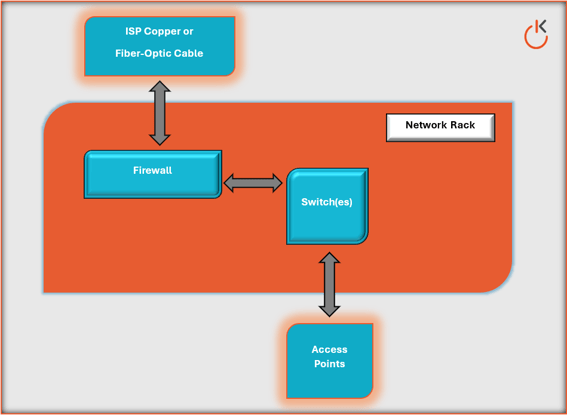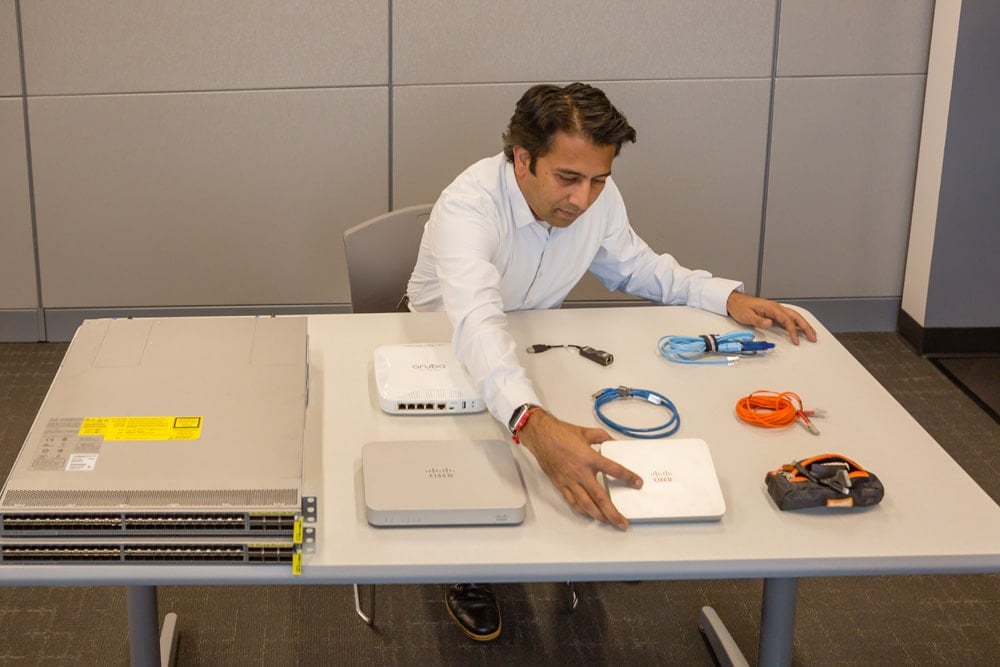What Are The Physical Devices In A Computer Network? How Do They Work?
Every business depends on its network to keep things running efficiently and safely. Although the technology backbone is critical to every organization’s success, many business leaders don’t understand the devices that drive their IT network.
I’m not suggesting a technical degree is necessary, but a working knowledge of the infrastructure elements can be helpful and provide the confidence you need when talking to your technology team.
As a network engineer, I’m often asked to explain how computer networks work. In this article, I’ll provide a top-level look at the key elements that work together to keep your business running.
We’ll explore each device and the role it plays without a whole bunch of “tech talk.” Rather than using technical jargon, we provide information in an honest, accessible way so that business leaders like you have the information you need to make important technology decisions for your organization.
It’s important to have a basic understanding of the devices in your technology infrastructure - the vital backbone that supports your entire business.
What Are The Physical Devices In A Computer Network?
The three devices that make up computer networks are:
1. Firewalls
In the simplest terms, a firewall connects your internal devices to the internet. For the purposes of our discussion, think of the firewall as an electrical outlet in your home that connects your devices to an external power source.
Your internet source is brought to your facility by your internet service provider (ISP) via either traditional copper or fiber-optic cable. It connects to your internal network at the firewall.
Firewalls act similarly to the routers you may use in your home network. They monitor and direct traffic traveling between networks, acting as a barrier to block or allow incoming and outgoing traffic based on the parameters your organization establishes.
Firewalls perform a variety of security tasks including:
-
-
- web filtering – stops traffic known to be malicious and displays a warning on your web browser
- antivirus protection – flags harmful traffic that displays characteristics of known viruses
- intrusion detection and prevention – monitors your network for suspicious activity and can prevent certain incidents from affecting your infrastructure
- web filtering – stops traffic known to be malicious and displays a warning on your web browser
-
Most modern firewalls operate at the application layer meaning they can inspect individual applications included in inbound and outbound traffic. For example, they can deny access to gambling websites or those that provide explicit content.
Modern firewalls make it easier for organizations to control the applications end users can access.
2. Switches
A switch serves as a connection between the firewall and hardwired devices. Since most firewalls don’t provide enough switches to support all of an organization’s users, multiple switches are usually stored in a network rack.
For visual purposes only, think of a switch as a power strip.
In the same way that a power strip allows multiple devices to use the power from one outlet, a switch allows multiple devices to access the internet from the same source.
The difference is that switches in a network also allow devices that are connected (or hardwired) to communicate with each other and share information.
3. Access Points
Access points (or APs) are basically Wi-Fi antennas that distribute signals from the switch to individual devices either via an ethernet cable or wirelessly.
APs are strategically distributed throughout a facility to make sure they cover all areas (not overlapping) providing optimal access for all devices that need to connect to Wi-Fi.

What’s The Bottom Line?
The physical devices outlined in this article are the key components of your network.
Firewalls, switches and APs work together to provide the signal your devices need to access the internet. Now you know what they are and the role each device plays in your network.
You may find that you need more switches or APs depending on the number of devices accessing the signal at any one time, the physical layout of your facility, and the access and transmission speed you need.
You also may decide to employ several firewalls to protect information of varying degrees of sensitivity with the most critical information protected behind several layers of firewalls.
Based on what you’ve learned in this article, you are ready to have an informed conversation with your technology team about the key elements of your network infrastructure. Remember that each of these devices has a fixed life-span and that they need to be replaced before end-of-life to keep things operating optimally.
Experience has shown that some small and medium-sized businesses have internal IT resources, others do not. Either way can work and what’s most important is not how you handle your technology needs, but that you handle them.
In today’s fast-paced, technology-driven business climate, make sure you understand the critical elements of care that every infrastructure requires so you can decide if external IT support is right for you.
If you are considering partnering with an external IT support provider, either because you don’t have a full complement of technology professionals on staff or because you want someone else to handle your technology “stuff,” steer clear of providers that can’t explain things to you in English.
And, always make sure to explore several external providers to get one that is the right fit.
Wondering what external IT support could look like? Learn your options for external IT support.
Already evaluating external IT support providers? Check out this list of 10 best questions to ask any IT service provider.
Or, if your head is swimming and are looking for a person who understands and can help you make sense of it all, use the button below to connect with one of our IT solutions experts. Provide your contact information and we'll schedule a 15-minute call to walk through your current IT situation and technology pain points.
No sales pressure, just a conversation.




